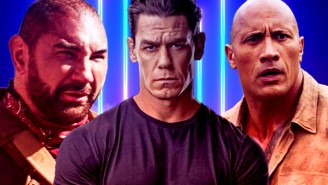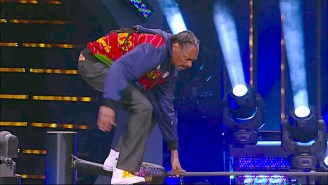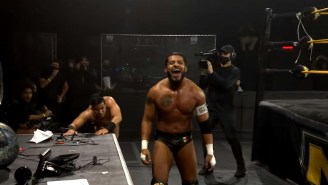If you ask Eric Bischoff what caused the downfall of WCW, one thing on his short list would be the fact the company had to spread itself thin with five hours of TV every single week with an additional three-hour pay-per-view every month. WWE has felt that same pressure to create dozens of hours of content a month. Over the last few years, they’ve moved Raw to three hours, added WWE Network content and have cranked out more pay-per-views (or whatever they want to call them now) than ever before.
And it’s killing the company.
It’s simply impossible for anybody to produce three hours of good, original, TV content on a weekly basis. Even for someone as brilliant as Vince McMahon, the idea of coming up with storylines to fill out that much time is a task that simply can’t be done.
WWE Raw moved to three hours in the summer of 2012. The first few three-hour shows were absolute garbage. The company simply had no idea how to manage that much time or how to keep the momentum going on shows that are as long as their PPV specials. Then, three men came to save the show.
Just a few months after Raw went to three hours, the Shield debuted. It took a while for WWE to exactly figure out what to do with them, but they eventually would become the saviors to the three-hour Raw. For a year and a half, WWE leaned on Seth Rollins, Roman Reigns and Dean Ambrose to fill the holes that the company’s creative team left empty. Nearly every Raw offered a three-segment Shield match that revolutionized how wrestling was presented on mainstream television. The threesome (who usually would face off against Daniel Bryan and two other whoevers) changed the WWE in-ring product forever. We’re in the best wrestling era WWE has ever had. Unfortunately, that comes with a price.
Now, the wrestling fan has been accustomed to pay-per-view quality matches every week. Just last week, we got a classic match between Cesaro and Roman Reigns. During the Attitude Era, that match would have been Match of the Year in a wash. Now, matches like that are weekly occurrences. Because the audience demands that high quality and also because they fill up the time extended Raws have to take up. The problem comes when the bar continues to get raised and the talent has to match the expectations. And the human body is just not made to withstand the high impact these high-quality matches cost. Sure, Ric Flair wrestled hour-long matches eight times a week for two decades, but he wasn’t having the type of high-impact matches WWE guys are having now. Just watch a basic Neville match; the impact and torque he’s putting on his knees every single night is begging for a serious injury.
As weekly show match quality goes up, so does the quality of the house show, so we’re watching talent put together demanding, grueling matches at a pace we’ve never seen before in wrestling. In the last couple of months, we saw two injuries at house shows where the videos have leaked. The first being John Cena getting knocked silly when Kevin Owens fell on his head in a house show. The other one, obviously, is Seth Rollins tearing his knee to shreds in a house show match against Kane. In the John Cena match, he was attempting a standing sunset flip powerbomb with a table in the ring. For Seth Rollins, he was attempting a sunset flip powerbomb from the top rope onto a table. These are absurd moves for stars to be pulling off at house shows. But they have to, because the TV product has conditioned the fan to expect these moves on a consistent basis.
WWE has a history of giving fans what they want as frequently as they want it, no matter the cost to the wrestler. During the Attitude Era, this looked like blood in every match and chair shots to the head every 15 minutes because fans grew to expect these things. Now, we’re looking at high-impact epic matches that human beings just can’t pull off. From April to October, John Cena had 30-minute matches almost every Monday and looked like he had just been run over by a bus by the time October rolled around.
And it’s all because wrestlers’ bodies are the only way WWE can fill up a three-hour Raw. While it’s created a great experience for those of us who just like watching great matches, the long-term affect is the fact that we’re losing out on stars who can’t keep up with the pace. Who knows what Seth Rollins will look like when he comes back? Daniel Bryan may never come back. And we’ve probably seen years taken off of Cena’s career.
If Raw were back to two hours, we could still get great matches, but not as many and not the same wrestlers having to pull them off every week. There’s also fewer minutes that WWE has to occupy. This allows creative to come up with full shows without just tossing out guys to destroy their bodies just for the passage of time.
I know there’s a big money grab that prevents WWE from going to two hours. Theoretically, they run the risk of cutting out a third of their Monday night TV revenue by cutting the show. But the long-term impact of the current wrestling pace means a depleted roster, an inability to distinguish between pay-per-views and regular shows and feuds not being special because we’ve seen every match before. As it stands, WrestleMania will be without Randy Orton, Seth Rollins, Daniel Bryan and maybe Nikki Bella… and it’s all thanks to three-hour Raws. Maybe it’s time for WWE to reevaluate the net benefit of the current state of its TV product, or we may be looking at depleted rosters for the foreseeable future.






